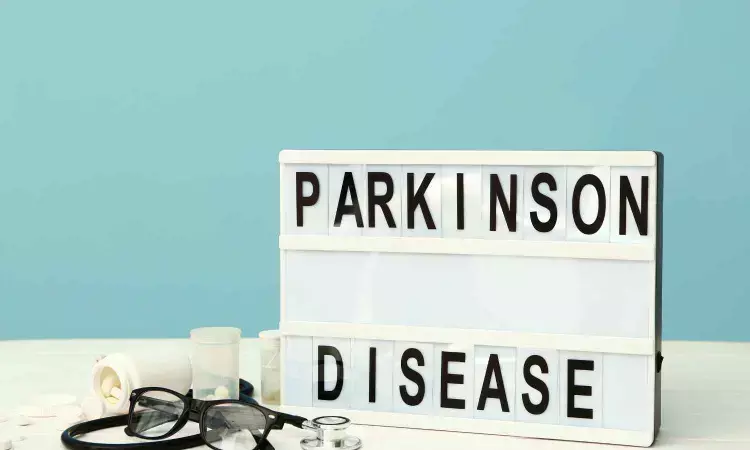- Home
- Medical news & Guidelines
- Anesthesiology
- Cardiology and CTVS
- Critical Care
- Dentistry
- Dermatology
- Diabetes and Endocrinology
- ENT
- Gastroenterology
- Medicine
- Nephrology
- Neurology
- Obstretics-Gynaecology
- Oncology
- Ophthalmology
- Orthopaedics
- Pediatrics-Neonatology
- Psychiatry
- Pulmonology
- Radiology
- Surgery
- Urology
- Laboratory Medicine
- Diet
- Nursing
- Paramedical
- Physiotherapy
- Health news
- Fact Check
- Bone Health Fact Check
- Brain Health Fact Check
- Cancer Related Fact Check
- Child Care Fact Check
- Dental and oral health fact check
- Diabetes and metabolic health fact check
- Diet and Nutrition Fact Check
- Eye and ENT Care Fact Check
- Fitness fact check
- Gut health fact check
- Heart health fact check
- Kidney health fact check
- Medical education fact check
- Men's health fact check
- Respiratory fact check
- Skin and hair care fact check
- Vaccine and Immunization fact check
- Women's health fact check
- AYUSH
- State News
- Andaman and Nicobar Islands
- Andhra Pradesh
- Arunachal Pradesh
- Assam
- Bihar
- Chandigarh
- Chattisgarh
- Dadra and Nagar Haveli
- Daman and Diu
- Delhi
- Goa
- Gujarat
- Haryana
- Himachal Pradesh
- Jammu & Kashmir
- Jharkhand
- Karnataka
- Kerala
- Ladakh
- Lakshadweep
- Madhya Pradesh
- Maharashtra
- Manipur
- Meghalaya
- Mizoram
- Nagaland
- Odisha
- Puducherry
- Punjab
- Rajasthan
- Sikkim
- Tamil Nadu
- Telangana
- Tripura
- Uttar Pradesh
- Uttrakhand
- West Bengal
- Medical Education
- Industry
Pesticides from golf courses influence prevalence of Parkinson's disease: JAMA

A new study published in the Journal of American Medical Association showed that the prevalence of Parkinson's disease (PD) among the local population may be influenced by pesticides used on golf courses.
Pesticide exposure is one of the environmental risk factors that has been associated with a higher risk of Parkinson's disease. It is yet unknown how golf course pesticide exposure affects the risk of Parkinson's disease. Therefore, this study was set to determine whether living close to golf courses is linked to a higher incidence of Parkinson's disease and to look at drinking water pollution as a possible exposure source using data on groundwater vulnerability and municipal well sites.
Patients with incident Parkinson's disease and matched controls from the Rochester Epidemiology Project, which ran from 1991 to 2015, were included in this case-control research. Living in water service areas with a golf course, living in water service areas in groundwater-vulnerable areas, living in water service areas with shallow municipal wells, living in water service areas with a municipal well on a golf course, and living in water service areas with a golf course were all considered. Sex, age, race and ethnicity, index year, median household income, and urban/rural categorization were all taken into account in all models.
There were 5,113 matched controls (median [IQR] age, 72 [65-79] years; 3043 male [59.5%]; 4504 White [88.1%]) and 419 incident PD patients (median [IQR] age, 73 [65-80] years; 257 male [61.3%]). Living within one mile of a golf course was linked to a 126% higher chance of having Parkinson's disease (PD) than living more than 6 miles away from one (adjusted odds ratio [aOR], 2.26; 95% CI, 1.09-4.70), even after controlling for patient demographics and neighborhood variables.
The risks of Parkinson's disease (PD) were nearly twice for those who lived in water service regions with golf courses (1.96; 95% CI, 1.20-3.23) and 49% higher for those who lived in areas with private wells (1.49; 95% CI, 1.05-2.13). Furthermore, the risks of getting Parkinson's disease (PD) were 82% higher for residents of water service areas with a golf course in sensitive groundwater regions than for residents of nonvulnerable groundwater regions (a1.82; 95% CI, 1.09-3.03).
Overall, those who lived closer to golf courses had a higher chance of developing Parkinson's disease (PD) than those who lived farther away. People who lived in sensitive groundwater locations and in water service areas with golf courses had the associations with the highest likelihood increases.
Source:
Krzyzanowski, B., Mullan, A. F., Dorsey, E. R., Chirag, S. S., Turcano, P., Camerucci, E., Bower, J. H., & Savica, R. (2025). Proximity to golf courses and risk of Parkinson disease. JAMA Network Open, 8(5), e259198. https://doi.org/10.1001/jamanetworkopen.2025.9198
Neuroscience Masters graduate
Jacinthlyn Sylvia, a Neuroscience Master's graduate from Chennai has worked extensively in deciphering the neurobiology of cognition and motor control in aging. She also has spread-out exposure to Neurosurgery from her Bachelor’s. She is currently involved in active Neuro-Oncology research. She is an upcoming neuroscientist with a fiery passion for writing. Her news cover at Medical Dialogues feature recent discoveries and updates from the healthcare and biomedical research fields. She can be reached at editorial@medicaldialogues.in
Dr Kamal Kant Kohli-MBBS, DTCD- a chest specialist with more than 30 years of practice and a flair for writing clinical articles, Dr Kamal Kant Kohli joined Medical Dialogues as a Chief Editor of Medical News. Besides writing articles, as an editor, he proofreads and verifies all the medical content published on Medical Dialogues including those coming from journals, studies,medical conferences,guidelines etc. Email: drkohli@medicaldialogues.in. Contact no. 011-43720751


